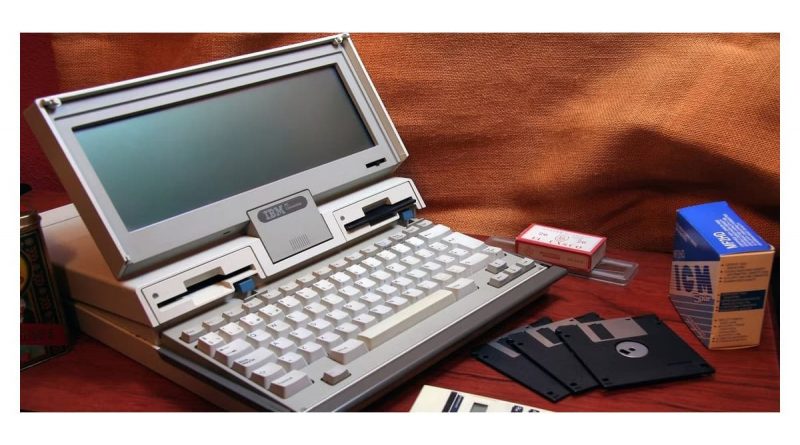Who invented the laptop? A list of 7 laptops that made history
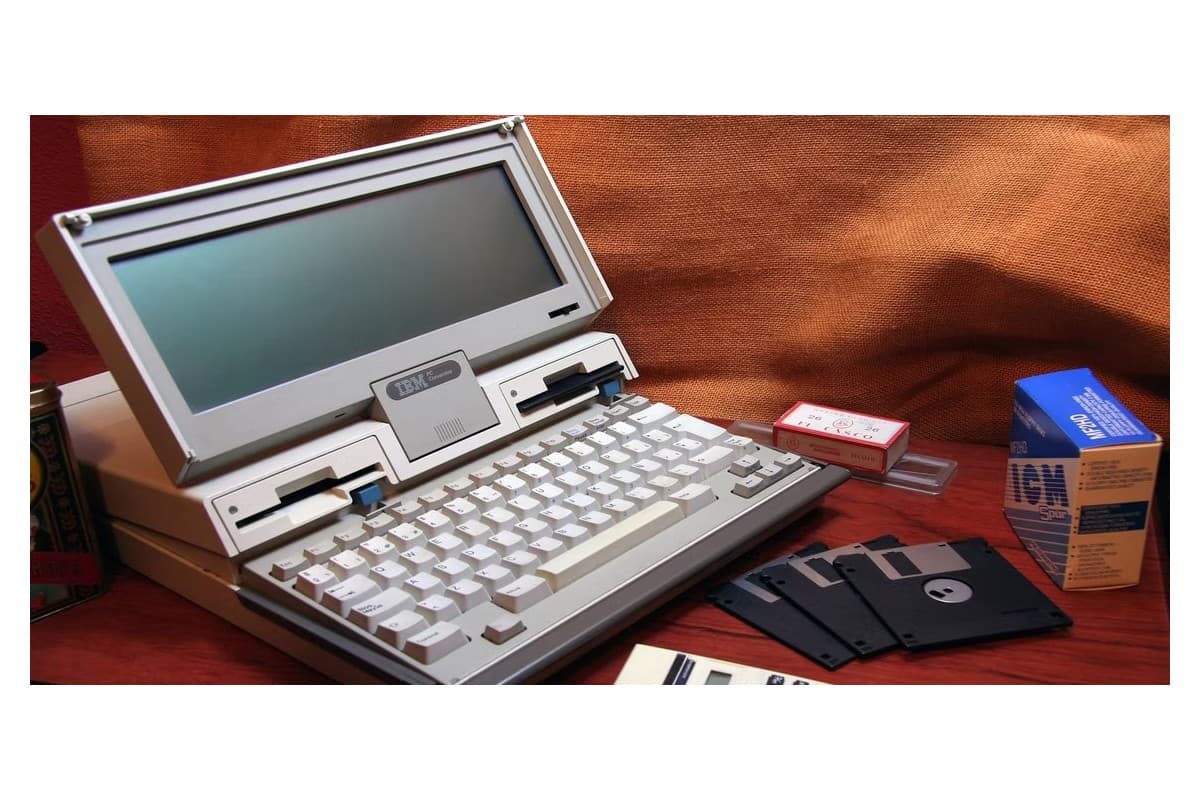
Laptops weren’t as light and portable as you may think at first, so let’s take a look at the 7 first laptops in history.
In 2022, portable computer sales were around 57%, indicating people’s tendency to buy laptops. The sleek design and powerful yet lightweight hardware mean they can be with us everywhere. But who first came up with the idea of making a laptop?
If you look at the pictures below, the initial laptops looked more like suitcases than portable computers! The first important step in producing a laptop was taken at the IBM Los Gatos Research Center by a team consisting of Dr. Paul Friedl and Bill Lowe, who later led the creation of the first IBM computer. Below you will see 7 versions of the first laptops, which led to significant changes and the start of the golden age of these portable systems.
1. IBM 5100
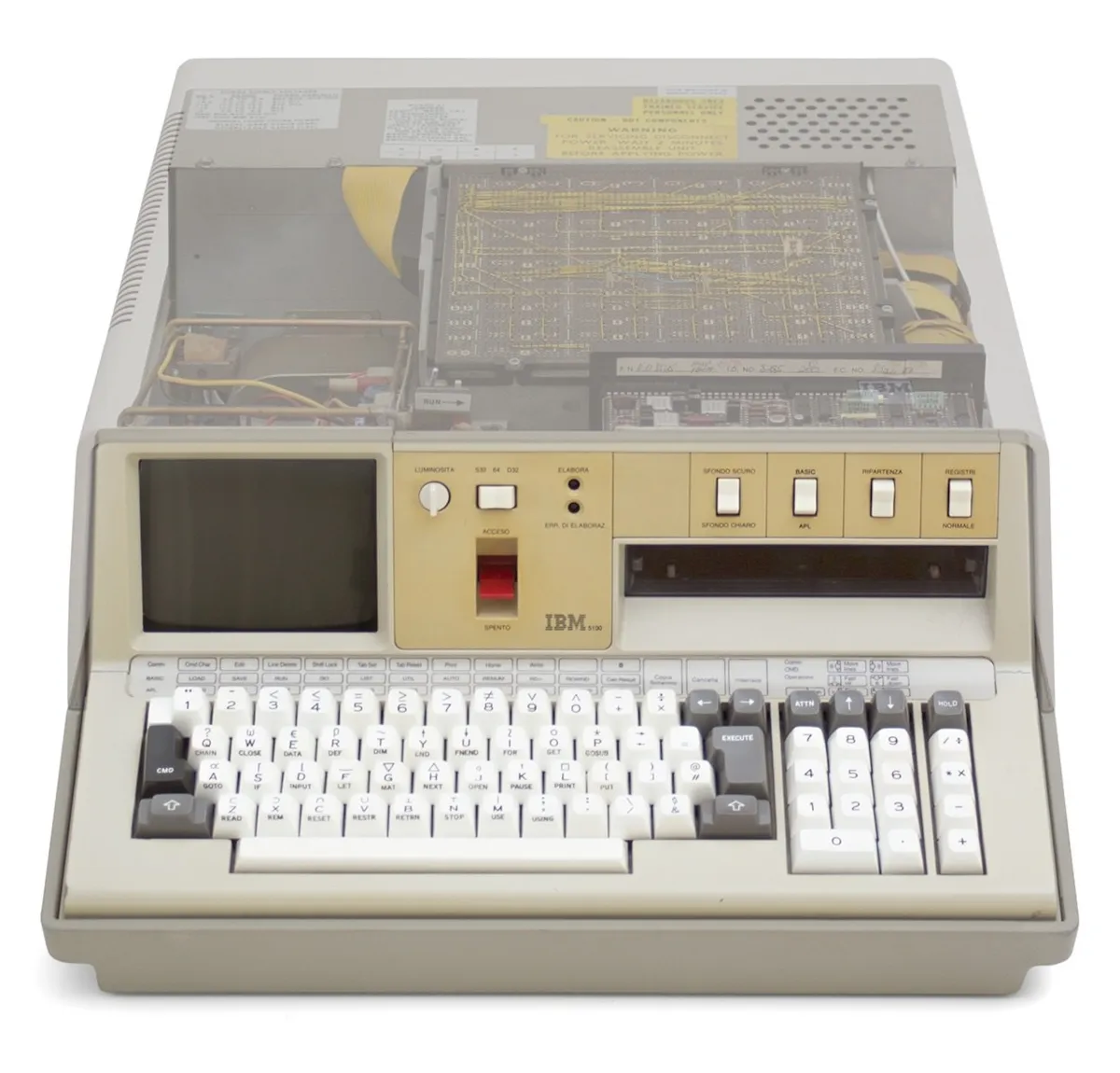
The IBM 5100, widely considered the first portable computer, was released in 1975. At that time, computers were the size of small cars, so this device was a revolutionary invention. The mentioned laptop was certainly portable with an IBM PALM processor (1.9 MHz) and a maximum of 16 kilobytes of RAM, but its weight reached about 25 kilograms. In addition, there was no battery in it, and it had to be placed near an electrical outlet to be used.
The IBM 5100 had a 5-inch monochrome CRT display and an IBM DataCartridge optical drive. While the IBM 5100 was not even close to today’s laptops in terms of size, it was an all-in-one device that was portable only as long as it was connected to electricity. The base price of this computer in 1975 was $ 8,975, which with inflation in those years, translates to about $ 25,000 today!
2. Epson HX-20
The Epson HX-20, which is considered by many to be the first truly portable computer or laptop, was released in 1980. What is now known as a Cyberdeck, it had two Hitachi 6301 CPUs (614 kHz), up to 32 KB of RAM, and 64 KB of ROM.
A compact four-line LCD, with a precision of 120 Ã 32 pixels, was installed alongside a dot matrix printer and a micro-cast drive, and the weight of this computer was only 1/6 kilogram. The Epson HX-20, which was supplied with a carrying case, was powered by rechargeable nickel-cadmium batteries, which unbelievably had a charging time of up to 50 hours! The Epson HX-20 cost only $795, which is currently close to $2160.
3. R2E CCMC Portal
This portable computer was also introduced in 1980 and was developed by French engineer, François Gernel, and released by R2E Micral. The R2E CCMC Portal had an Intel 8085 processor with a clock speed of 2 MHz, 64 KB of RAM, a 32-character display, a 5.25-inch floppy drive, and a thermal printer.
Like the IBM 5100, this device was not completely portable, but with its 12-kilogram weight, it was light enough to be moved again if needed. In the early 1980s, hundreds of R2E CCMC Portals were sold as a device for calculating wages and salaries in France, but now this device is extremely rare and only two remain. Information on the price of this portable computer is not available.
4. Osborne 1
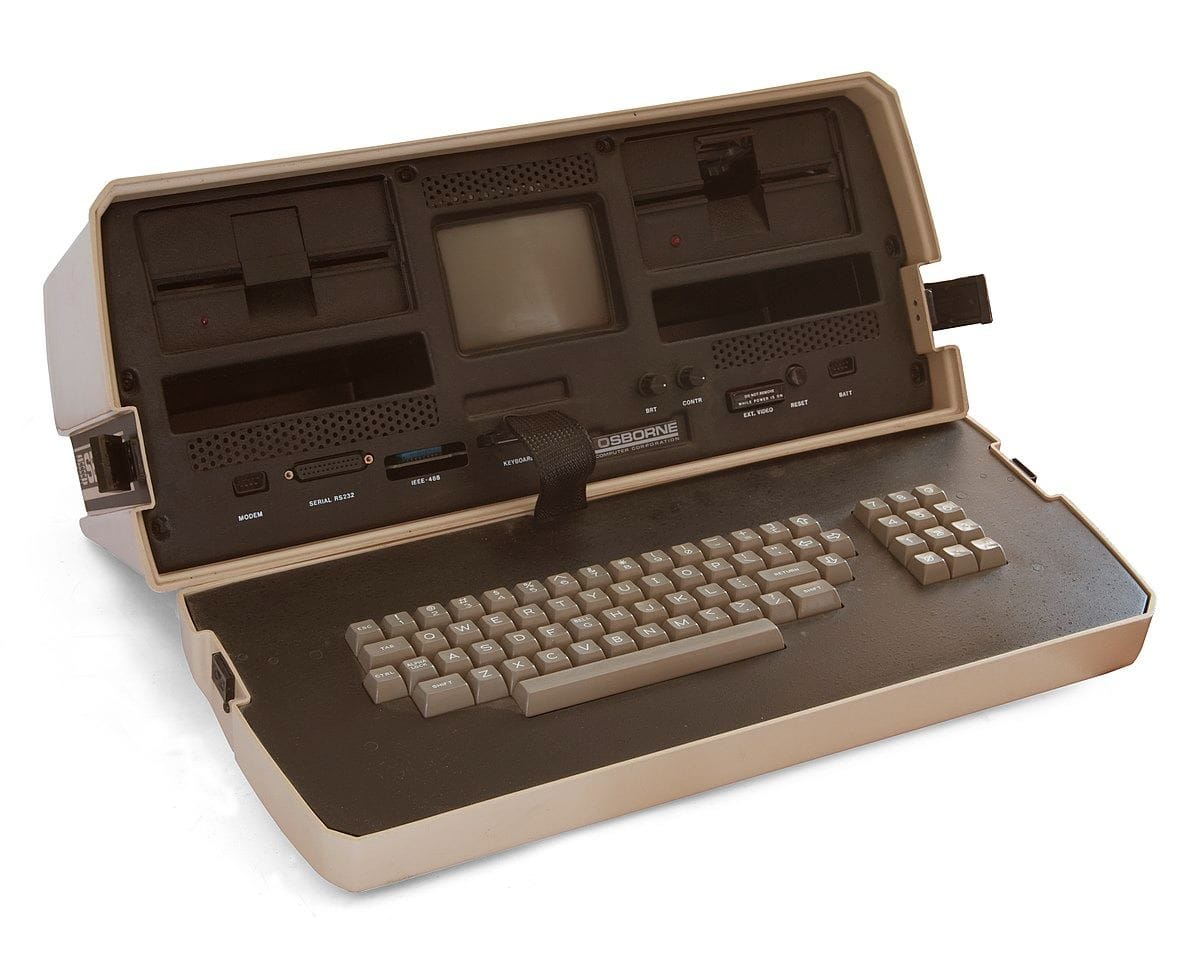
In 1981, the portable computer Osborne 1, which had a strong resemblance to the IBM 5100, was released. The device, weighing 11 kilograms, was made by Adam Osborne at Osborne Computer Company. Osborne 1 had a 4 MHz Zilog Z80 processor (the chip that provided much of the power for 8-bit systems and was simultaneous with the release of the third generation of game consoles) and 64KB of RAM, as well as two 5.25-inch floppy drives. During transport, the keyboard was placed on the 5-inch single-color CRT display and disk drives, and the system was closed for mobility.
Due to the unique design of this product, other companies also used this type of design for their portable computers. Osborne 1 was priced at $1,795 on the day of release, which is about $5,350 today.
5. GRiD Compass
The work on the GRiD Compass, which was primarily developed for the NASA space shuttle program, began in 1979 and was released in 1982. This portable computer, designed by Bill Moggridge, is known as the first clamshell laptop, featuring an Intel 8086 processor with a frequency of 8 MHz, 34 kilobytes of memory, a 320 x 240 display, and an internal modem.
GRiD Compass was used by the US special forces in addition to use in space shuttle missions. Despite its highly influential design, this laptop was not equipped with an internal battery and was powered by a standard 110/220 volt AC power source. The price of this device was unbelievably high in 1982 and ordinary people could not afford to buy it. In that year, GRiD Compass was sold for $8150, which is now close to $22880.
6. Compaq Portable
In March 1983, this IBM-compatible computer was released. Behind its 9-inch display, an Intel 8088 processor with a speed of 4.77 MHz and 128 KB of RAM was installed. For the hard part of the device, users could choose between two 5.25-inch floppy drives or a 10 MB hard disk.
Compaq Portable, weighing almost 13 kilograms, looked more like a suitcase than a laptop! Like the Osborne 1, the keyboard of this device was also attached to the body and required AC power to work.
Compaq Portable was priced at $2,995 in that year, which would be close to $8,150 today. Since this system was IBM-compatible, it could run almost all first-generation PC software.
7. TRS-80 Model 100
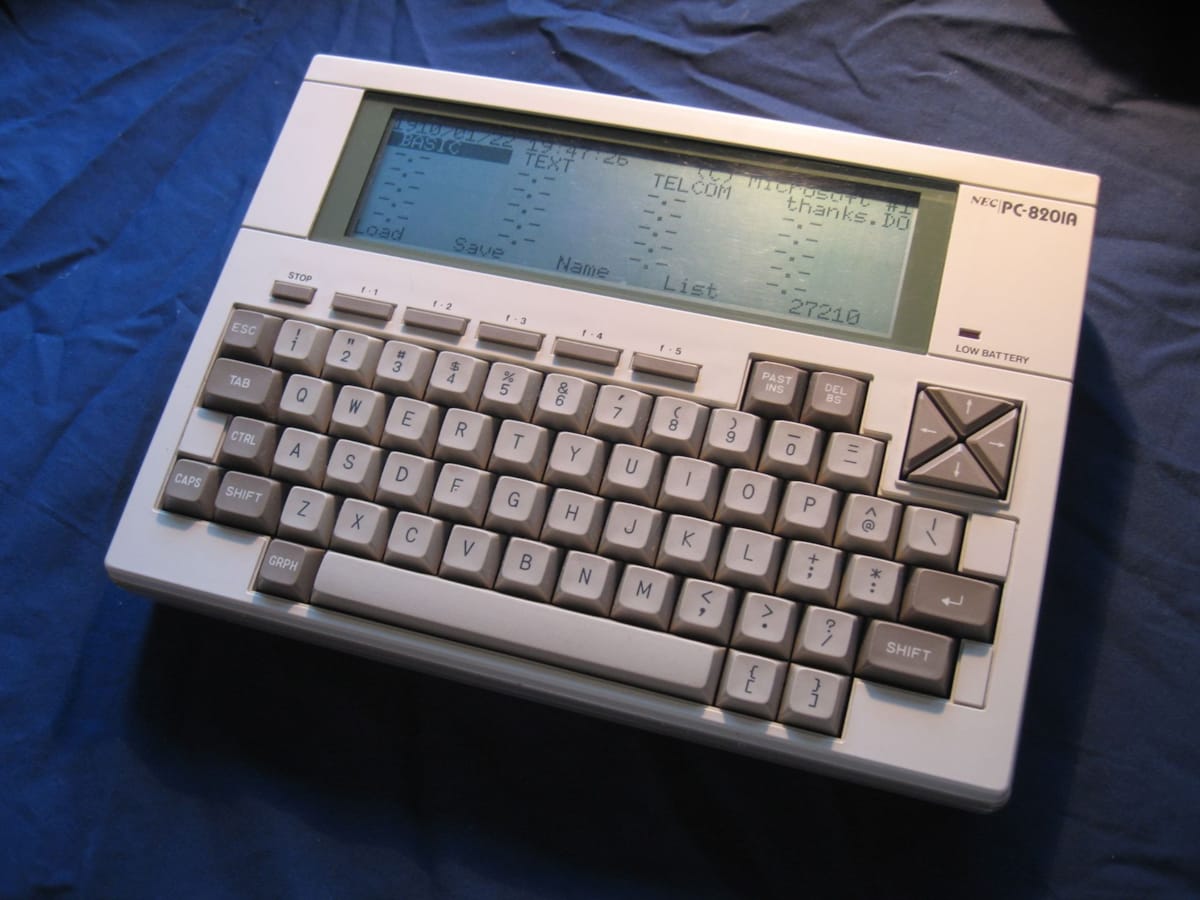
While previous laptops each had a specific purpose those didn’t do things as easily as the TRS-80 Model 100.
This portable computer, which was released by Radio Shack in 1983, was controlled by a 2.4 MHz processor, had a maximum of 32 KB of RAM and an eight-line LCD in forty characters (240 by 64 pixels). It also had a 56-key QWERTY keyboard, internal modem, parallel printer port, and four AA batteries. These batteries could last up to 20 hours on a single charge.
However, what made the TRS-80 Model 100 special was the attraction of journalists to the device. Their enthusiasm for computers throughout the industry (and beyond) spread and ultimately led to the sale of more than six million units of this laptop. The earliest version of this laptop had a price tag equivalent to $1,099, which today is estimated at about $3,000. This product was so popular that various competitors imitated it heavily.
The ability to move electronic objects increases their productivity. Today, with a laptop, you can check your emails anywhere, view various documents, or easily communicate with your friends. Mobile phones and tablets have a similar application in this area, but laptops have more productivity due to their operating system and other features such as keyboards and various ports. Something that might not have been possible if the parent companies IBM and Epson hadn’t been there.

